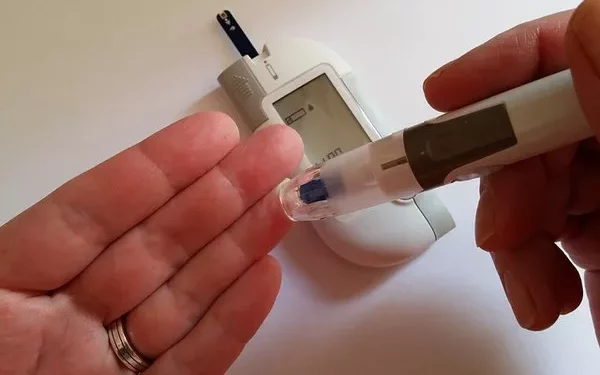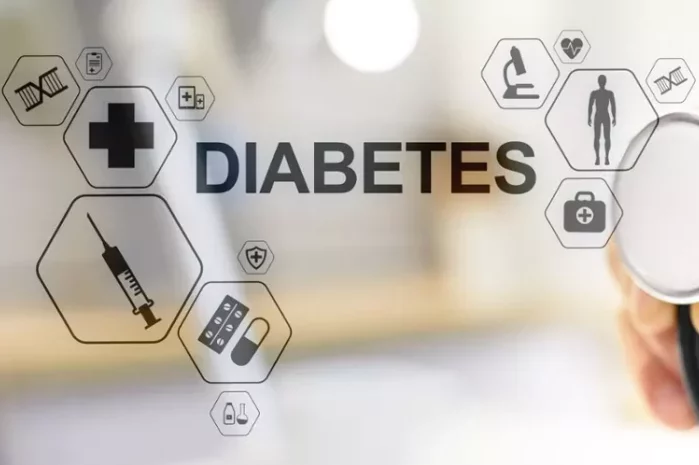Monitoring blood sugar levels is crucial for individuals with diabetes and those at risk of developing the condition. Among the various testing methods, fasting blood sugar tests are commonly used to evaluate how well the body manages glucose. Understanding what constitutes a normal fasting blood sugar level, particularly after a 12-hour fast, is essential for effective diabetes management and overall health.
Understanding Fasting Blood Sugar
1. What is Fasting Blood Sugar?
Fasting blood sugar refers to the measurement of glucose levels in the blood after abstaining from all food and beverages, except water, for at least 8 hours. A 12-hour fasting period is often recommended for more accurate assessments. This test helps healthcare providers determine how well the body processes sugar, providing insight into the risk of diabetes and other metabolic disorders.
2. Importance of Fasting Blood Sugar Testing
Fasting blood sugar testing is important for several reasons:
Diagnosis of Diabetes: It is one of the primary methods used to diagnose diabetes and prediabetes.
Monitoring Diabetes Management: For individuals already diagnosed with diabetes, regular fasting blood sugar testing helps monitor the effectiveness of treatment plans and lifestyle changes.
Assessing Insulin Sensitivity: Fasting blood sugar levels can indicate how well the body responds to insulin, which is crucial for metabolic health.
3. How Fasting Blood Sugar is Measured
Fasting blood sugar levels are typically measured using a blood sample taken from a vein in the arm or a finger prick. The results are then compared to established guidelines to determine whether the levels fall within a normal range.
Normal Fasting Blood Sugar Levels
1. Ranges of Fasting Blood Sugar Levels
According to the American Diabetes Association (ADA), fasting blood sugar levels are categorized as follows:
Normal: Less than 100 mg/dL (5.6 mmol/L)
Prediabetes: 100-125 mg/dL (5.6-6.9 mmol/L)
Diabetes: 126 mg/dL (7.0 mmol/L) or higher on two separate tests
2. Factors Influencing Fasting Blood Sugar Levels
Several factors can influence fasting blood sugar levels, including:
Diet: The type and quantity of food consumed before fasting can affect blood sugar levels.
Physical Activity: Exercise can lower blood sugar levels, while lack of activity can lead to higher levels.
Medications: Certain medications, such as corticosteroids or antipsychotics, can raise blood sugar levels.
Stress: Physical or emotional stress can lead to increased blood sugar levels due to the release of stress hormones like cortisol.
Illness: Acute illnesses or infections can raise blood sugar levels as the body responds to stress.
Understanding the 12-Hour Fast
1. What Constitutes a 12-Hour Fast?
A 12-hour fast involves not consuming any calories, including food and sugary beverages, for a continuous period of 12 hours. During this time, individuals can drink water, which is essential for hydration and can help facilitate accurate blood sugar testing.
2. Importance of a 12-Hour Fast for Testing
A 12-hour fasting period allows the body to return to a baseline state, minimizing the impact of recent food intake on blood sugar levels. This extended fasting period helps healthcare providers obtain a more accurate measurement of how well the body regulates glucose.
3. Preparation for Fasting Blood Sugar Testing
To prepare for a fasting blood sugar test, consider the following guidelines:
Timing: Schedule your test for the morning after an overnight fast. This is usually the most convenient time.
Hydration: Drink plenty of water during the fasting period to stay hydrated.
Medications: Consult with your healthcare provider regarding medications and whether to take them before the test.
Avoiding Certain Activities: Refrain from strenuous exercise during the fasting period, as this may affect blood sugar levels.
Analyzing the Results of a Fasting Blood Sugar Test
1. Interpreting Fasting Blood Sugar Levels
Once the fasting blood sugar test is completed, interpreting the results is crucial for understanding health status:
Normal Levels (Less than 100 mg/dL): Indicates good blood sugar control and a lower risk of diabetes.
Prediabetes (100-125 mg/dL): Indicates an increased risk of developing type 2 diabetes. It is crucial to implement lifestyle changes, including diet and exercise, to prevent progression.
Diabetes (126 mg/dL or higher): A diagnosis of diabetes requires further evaluation and management strategies.
2. Importance of Follow-Up Testing
If fasting blood sugar levels are outside the normal range, follow-up testing is essential:
Repeat Testing: The ADA recommends repeating the fasting blood sugar test on a different day to confirm results.
Additional Tests: Healthcare providers may suggest other tests, such as the HbA1c test or an oral glucose tolerance test, to gain more insight into glucose regulation.
The Role of Lifestyle in Managing Fasting Blood Sugar
1. Dietary Choices
What you eat plays a significant role in blood sugar management:
Balanced Meals: Focus on meals that include a balance of carbohydrates, protein, and healthy fats to help stabilize blood sugar levels.
Whole Foods: Emphasize whole, unprocessed foods such as fruits, vegetables, whole grains, lean proteins, and healthy fats.
Glycemic Index: Consider the glycemic index (GI) of foods, which indicates how quickly they raise blood sugar levels. Choose lower-GI options to promote stable blood sugar.
2. Physical Activity
Regular physical activity is beneficial for blood sugar control:
Exercise: Aim for at least 150 minutes of moderate aerobic activity per week, such as brisk walking, swimming, or cycling.
Strength Training: Include resistance exercises at least two days a week to build muscle mass and improve insulin sensitivity.
3. Weight Management
Maintaining a healthy weight is crucial for blood sugar regulation:
Weight Loss: Even a modest weight loss of 5-10% can significantly improve blood sugar levels and reduce the risk of diabetes.
Balanced Diet and Exercise: Combining a healthy diet with regular physical activity is the most effective way to achieve and maintain a healthy weight.
4. Stress Management
Managing stress is essential for blood sugar control:
Stress Reduction Techniques: Consider practices such as yoga, meditation, deep breathing exercises, or mindfulness to help manage stress levels.
Adequate Sleep: Prioritize quality sleep, as sleep deprivation can negatively affect blood sugar levels.
When to Seek Medical Advice
It is important to consult a healthcare provider if:
You experience symptoms of high blood sugar, such as increased thirst, frequent urination, fatigue, or blurred vision.
You have risk factors for diabetes, including obesity, a family history of diabetes, or a sedentary lifestyle.
Your fasting blood sugar results are consistently outside the normal range.
1. Risk Factors for Diabetes
Understanding risk factors can help individuals take proactive steps to manage their health:
Genetics: A family history of diabetes increases the risk of developing the condition.
Age: The risk of diabetes increases with age, particularly after age 45.
Lifestyle: Sedentary behavior, poor dietary choices, and obesity are significant risk factors.
2. Regular Screening
Regular screening for diabetes is essential, especially for individuals at risk:
Frequency of Testing: Individuals over age 45 or those with risk factors should be tested every 3 years.
Monitoring: Those diagnosed with prediabetes should be tested annually.
Conclusion
A 12-hour fasting blood sugar test is a vital tool in assessing glucose regulation and diagnosing diabetes. Understanding what constitutes a normal fasting blood sugar level is essential for effective management of diabetes and overall health. Fasting blood sugar levels less than 100 mg/dL indicate normal glucose control, while levels between 100-125 mg/dL suggest prediabetes, and levels of 126 mg/dL or higher indicate diabetes.
Managing blood sugar levels involves a comprehensive approach, including dietary choices, physical activity, weight management, and stress reduction. Regular monitoring and consultation with healthcare providers can lead to timely interventions and prevent complications associated with diabetes. By adopting a healthy lifestyle and understanding the significance of fasting blood sugar levels, individuals can improve their overall health and quality of life.
Related topics:
What Is a Dangerous Level of A1C?



























